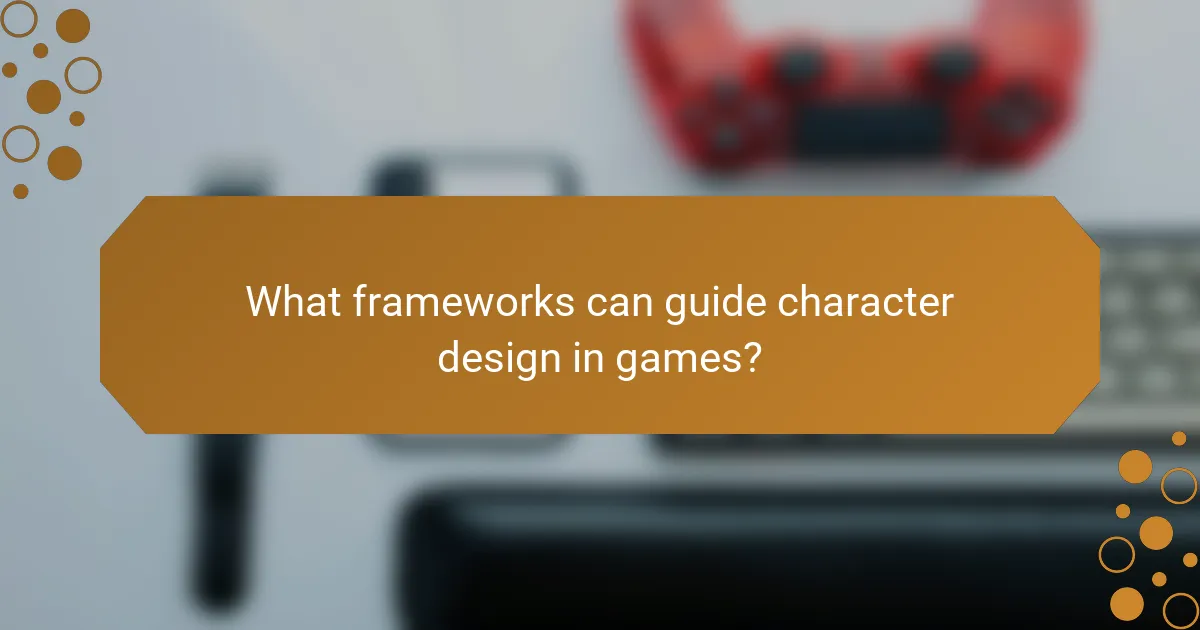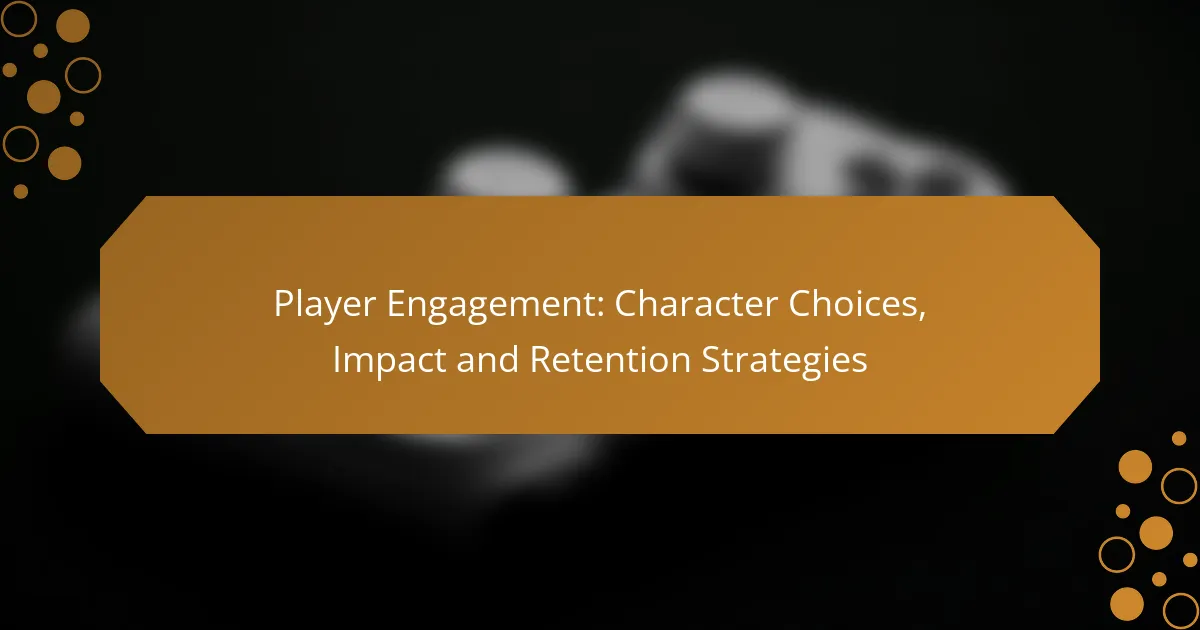Balancing character flaws and strengths is essential for creating engaging and relatable characters in gaming. By incorporating imperfections, developers can enhance player experience through deeper connections and immersive storytelling. Thoughtful design strategies, including character arcs and moral dilemmas, further enrich gameplay and narrative development.

How can character flaws enhance player experience in digital games?
Character flaws can significantly enhance player experience by making characters more relatable and engaging. These imperfections create depth, allowing players to connect with characters on a personal level, which can lead to a more immersive gaming experience.
Flaws create relatable characters
Characters with flaws mirror real human experiences, making them more relatable to players. For instance, a character struggling with self-doubt or anger issues can resonate with players who face similar challenges in their lives.
Relatable characters often foster emotional investment, encouraging players to care about their journeys. This connection can enhance the overall narrative, making players more likely to engage with the story and its outcomes.
Flaws drive player engagement
Flaws can serve as catalysts for player engagement by introducing challenges and conflicts that require resolution. For example, a character’s impulsiveness might lead to critical decisions that affect the game’s outcome, prompting players to think strategically about their choices.
Additionally, flaws can create opportunities for players to experience moments of triumph when overcoming obstacles related to these imperfections. This dynamic can lead to a more rewarding gameplay experience, as players feel a sense of accomplishment in navigating these challenges.
Flaws lead to character growth
Character flaws often set the stage for growth and development throughout the game. As players guide characters through their struggles, they witness transformation, which can be both inspiring and satisfying.
For instance, a character who learns to manage their temper may unlock new abilities or story arcs, providing players with tangible rewards for their investment in the character’s journey. This growth not only enhances the narrative but also encourages players to reflect on their own experiences and growth.

What are effective design strategies for balancing character strengths and flaws?
Effective design strategies for balancing character strengths and flaws involve creating nuanced characters that enhance player engagement. This can be achieved through thoughtful character arcs, gameplay mechanics, and moral dilemmas that challenge players and enrich their experience.
Implementing character arcs
Character arcs are essential for illustrating growth and change, allowing players to see how strengths and flaws evolve over time. A well-crafted arc can guide players through challenges that highlight both the positive and negative aspects of a character, making the narrative more compelling.
For example, a character who starts with a strong sense of justice may face situations that test their moral compass, leading to growth or potential downfall. This dynamic can create a more immersive experience, as players invest emotionally in the character’s journey.
Using gameplay mechanics
Gameplay mechanics can effectively balance character strengths and flaws by integrating them into the game’s systems. For instance, a character with a high strength may have limited social skills, impacting their ability to negotiate or persuade others. This creates a trade-off that players must navigate.
Consider implementing mechanics such as skill checks or resource management that reflect these strengths and flaws. This encourages players to strategize and adapt their playstyle, enhancing engagement and making each choice meaningful.
Creating moral dilemmas
Moral dilemmas force players to confront the consequences of their character’s strengths and flaws, adding depth to the gameplay experience. By presenting choices that challenge a character’s values, players must weigh their options carefully, often leading to unexpected outcomes.
For example, a character with a strong loyalty trait may face a situation where they must choose between loyalty to a friend and doing what is right for the greater good. These moments not only deepen the narrative but also encourage players to reflect on their decisions and the character’s development.

How do character flaws impact narrative development?
Character flaws significantly influence narrative development by creating obstacles and driving conflict. These imperfections add depth to characters, making their journeys more relatable and engaging for players.
Flaws influence plot progression
Character flaws often serve as catalysts for plot progression, pushing the story forward through challenges and conflicts. For example, a character with a fear of commitment may face situations that force them to confront this flaw, leading to pivotal moments in the narrative.
As players navigate these challenges, they experience a dynamic storyline that evolves based on the character’s decisions and growth. This interplay between flaws and plot can lead to unexpected twists, enhancing player engagement.
Flaws shape character relationships
Character flaws play a crucial role in shaping relationships within the narrative. Flaws can create tension or camaraderie between characters, as they may either clash or bond over shared weaknesses. For instance, a character’s arrogance might alienate allies, while vulnerability can foster deeper connections.
Understanding how flaws impact relationships allows writers to craft more nuanced interactions. Players may find themselves drawn into the emotional complexities of these relationships, enriching their overall experience and investment in the story.

What frameworks can guide character design in games?
Frameworks for character design in games help developers create balanced characters with both strengths and flaws, enhancing player engagement. Key models and integration of player feedback are essential for refining character traits and ensuring a satisfying gameplay experience.
Character development models
Character development models provide structured approaches to designing characters with distinct traits. Popular models include the Myers-Briggs Type Indicator (MBTI) and the Big Five personality traits, which can guide the creation of diverse characters that resonate with players. For instance, a character designed as an extroverted leader may exhibit strengths in social interactions but could struggle with impulsiveness.
When applying these models, consider the balance between strengths and weaknesses. A well-rounded character might have a high level of charisma but lower analytical skills, creating opportunities for interesting interactions and challenges in gameplay. Aim for a mix of traits that can lead to dynamic storytelling and player choices.
Player feedback integration
Integrating player feedback into character design is crucial for refining character strengths and flaws. Gathering insights through surveys, playtesting, and community forums can reveal how players perceive character traits and their impact on gameplay. This feedback loop allows developers to adjust character attributes to enhance player satisfaction and engagement.
To effectively incorporate feedback, establish clear channels for players to share their experiences and suggestions. Regularly analyze this input to identify patterns or common concerns. For example, if players find a character’s flaws frustrating rather than challenging, consider adjusting those traits to maintain balance while keeping gameplay enjoyable.

How can developers measure the impact of character flaws on player satisfaction?
Developers can measure the impact of character flaws on player satisfaction through various methods, including collecting direct feedback from players and analyzing their in-game behavior. Understanding how these flaws affect player experiences is crucial for creating engaging and balanced characters.
Surveys and player feedback
Surveys are a direct way to gather player opinions on character flaws and strengths. Developers can design questionnaires that ask players to rate their enjoyment of characters with specific flaws, providing insights into how these traits influence overall satisfaction.
Incorporating open-ended questions allows players to express their thoughts in detail, revealing nuanced perspectives. For instance, asking players what they liked or disliked about a character’s flaw can help developers identify which traits enhance or detract from the gaming experience.
Data analytics on player behavior
Data analytics can reveal how character flaws affect player engagement and decision-making. By tracking player choices, time spent with certain characters, and overall game progression, developers can infer the impact of these flaws on satisfaction levels.
For example, if players consistently avoid characters with specific flaws, it may indicate that those traits are negatively perceived. Conversely, if players gravitate towards flawed characters, it could suggest that these imperfections enhance their enjoyment and connection to the game.

What are common character flaws used in successful games?
Common character flaws in successful games include traits that create conflict, drive narratives, and enhance player engagement. Flaws like hubris and fear of failure not only add depth to characters but also shape their interactions and growth throughout the game.
Hubris in protagonists
Hubris, or excessive pride, often leads protagonists to make reckless decisions, creating compelling story arcs. This flaw can manifest in characters who overestimate their abilities or disregard warnings, ultimately leading to their downfall or significant challenges.
For example, a hero who believes they can single-handedly defeat a powerful enemy may ignore the need for allies, resulting in a dramatic confrontation that tests their limits. Balancing hubris with moments of humility can enhance character development and player investment.
Fear of failure in antagonists
Fear of failure is a common trait among antagonists, driving their actions and decisions. This flaw often leads them to take extreme measures to maintain control or power, creating tension and conflict within the story.
An antagonist who fears losing their position may resort to manipulation or intimidation, making them more relatable and complex. This fear can also lead to mistakes, allowing protagonists opportunities to exploit weaknesses and ultimately triumph.

How do cultural contexts influence character flaw design?
Cultural contexts significantly shape how character flaws are perceived and designed in games. Different cultures may have varying values, beliefs, and social norms that inform what is considered a flaw or a strength, impacting player experience and engagement.
Understanding Cultural Values
Cultural values dictate what traits are admired or frowned upon. For instance, collectivist societies may view traits like selfishness as severe flaws, while individualistic cultures might see them as assertiveness. Recognizing these differences helps in creating characters that resonate with diverse audiences.
Designing Flaws with Sensitivity
When designing character flaws, sensitivity to cultural nuances is crucial. Flaws should not perpetuate stereotypes or offend cultural sensibilities. For example, a flaw like “over-ambition” might be seen positively in some cultures but negatively in others. Testing character designs with diverse focus groups can provide valuable insights.
Impact on Player Engagement
Cultural contexts influence how players engage with characters and their flaws. Characters that reflect players’ cultural backgrounds can enhance relatability and emotional investment. Conversely, flaws that clash with cultural norms may alienate players, reducing their overall enjoyment and connection to the game.



